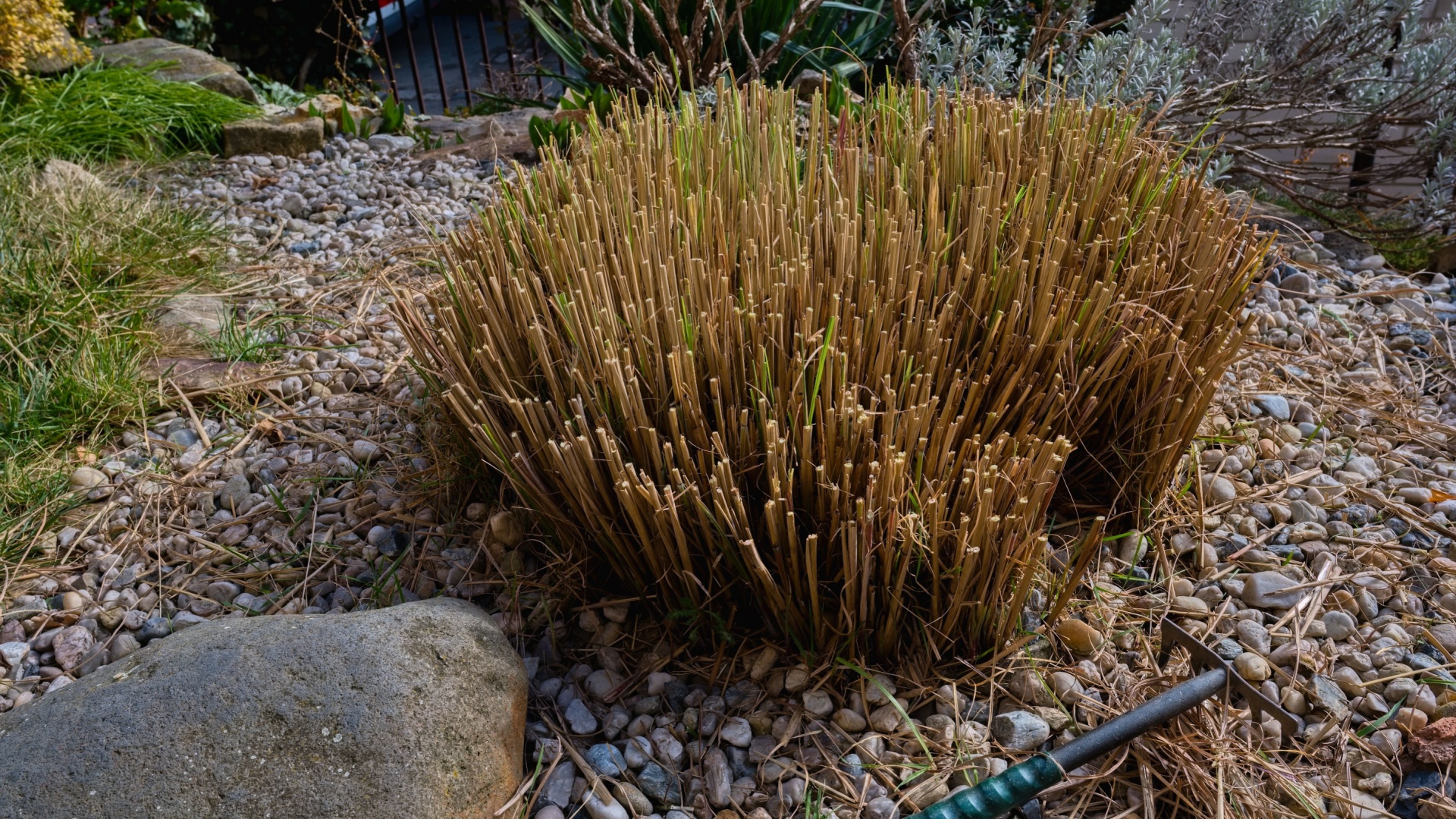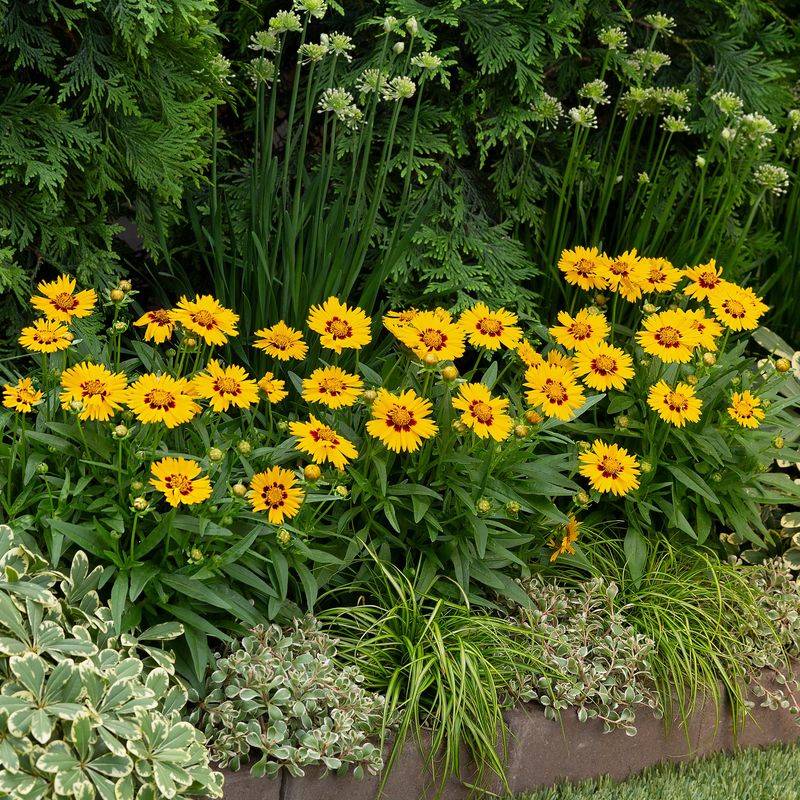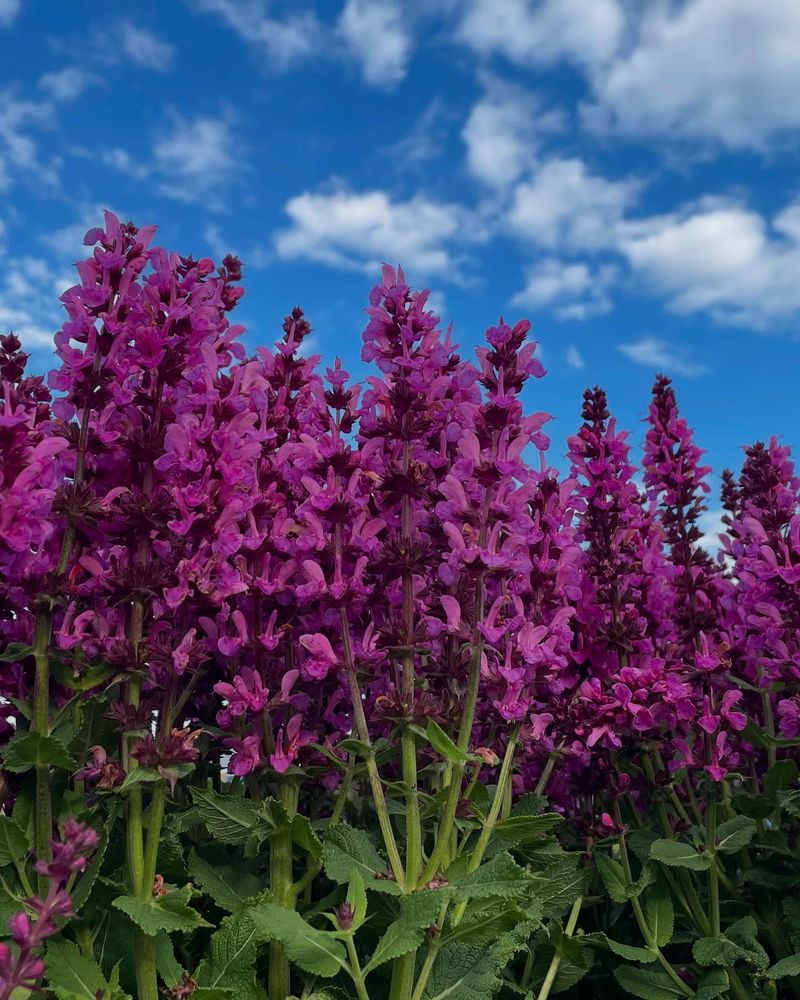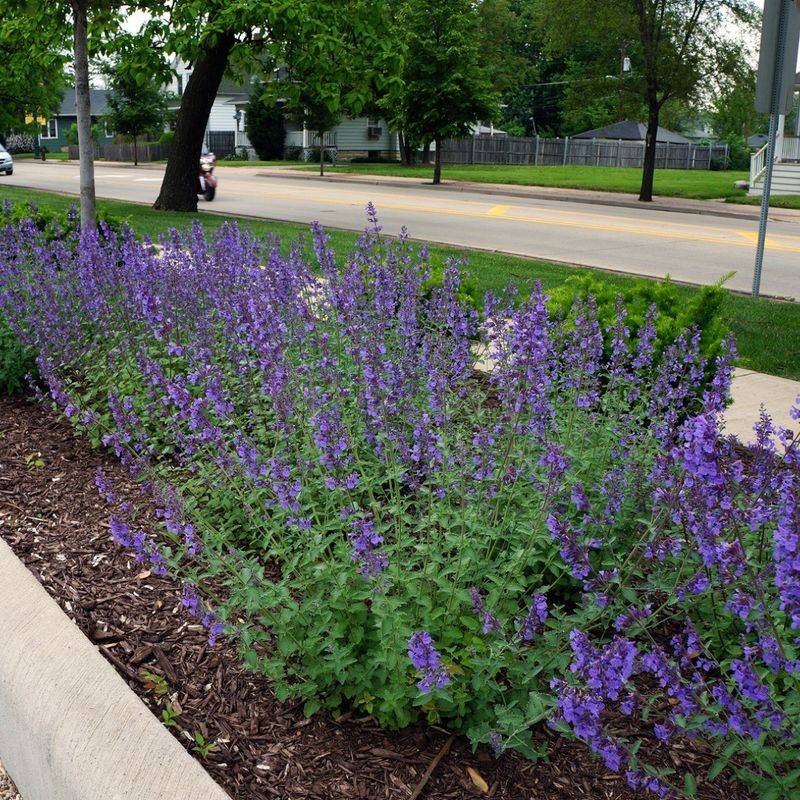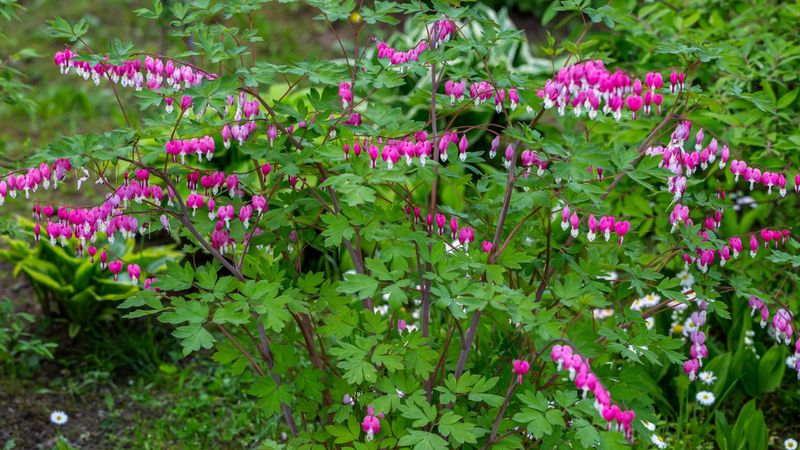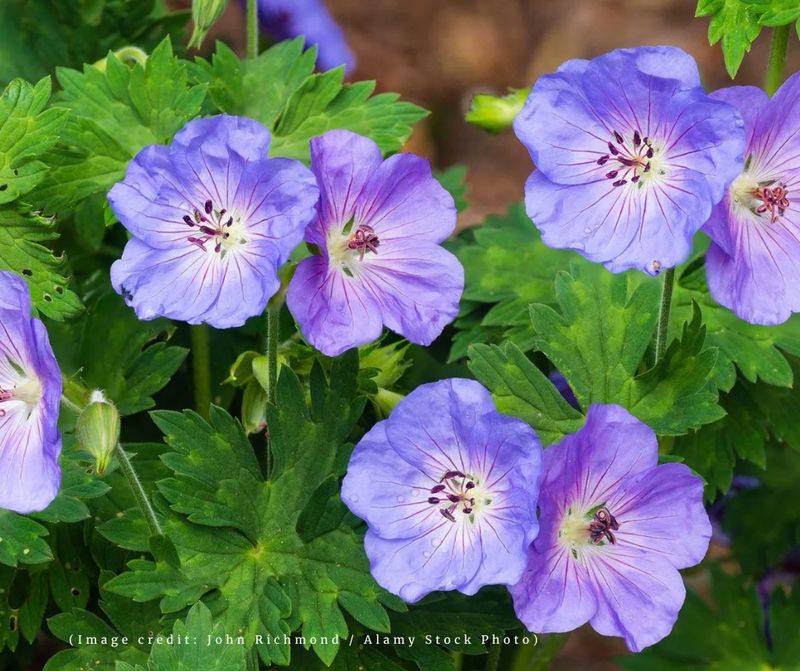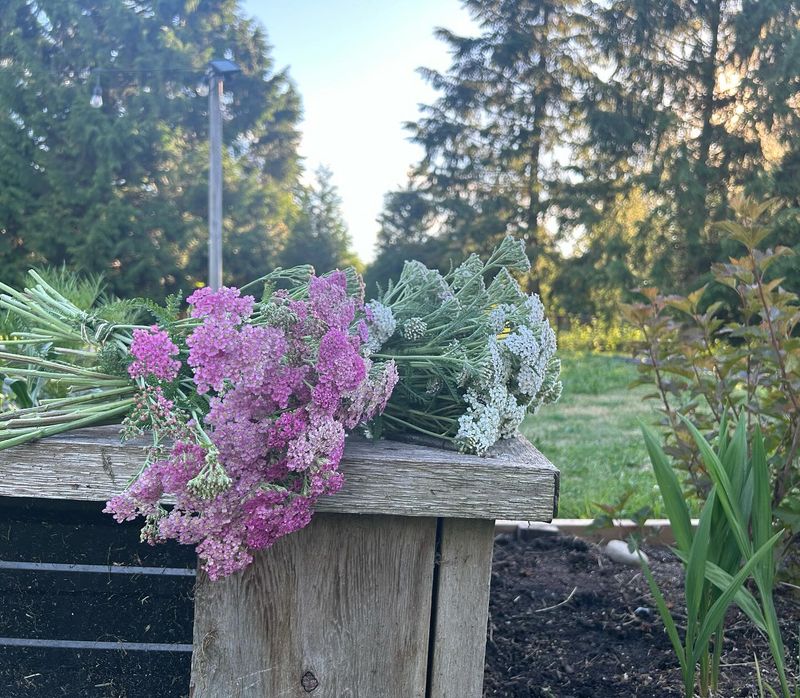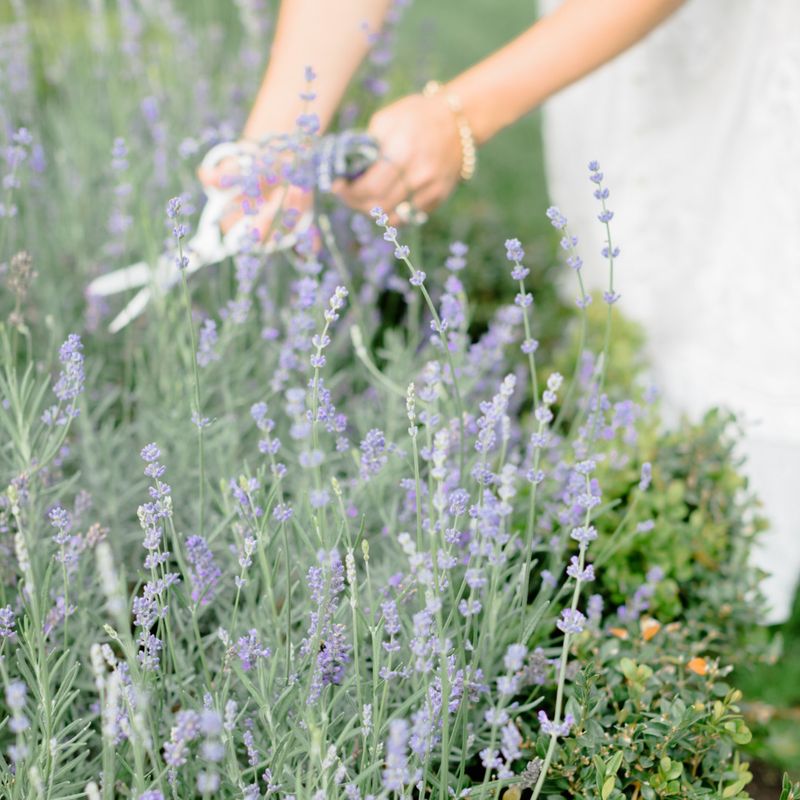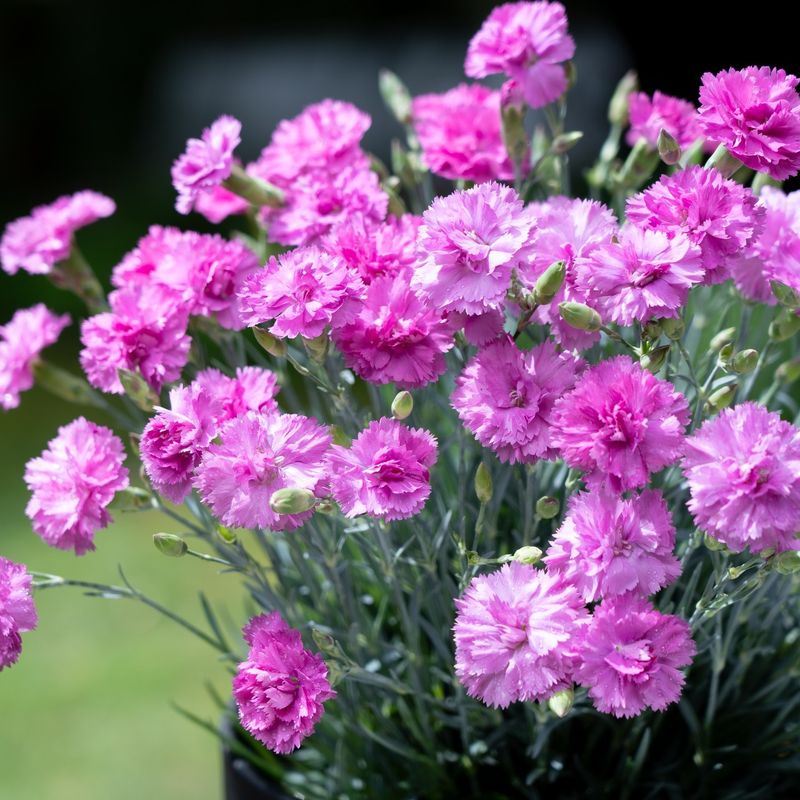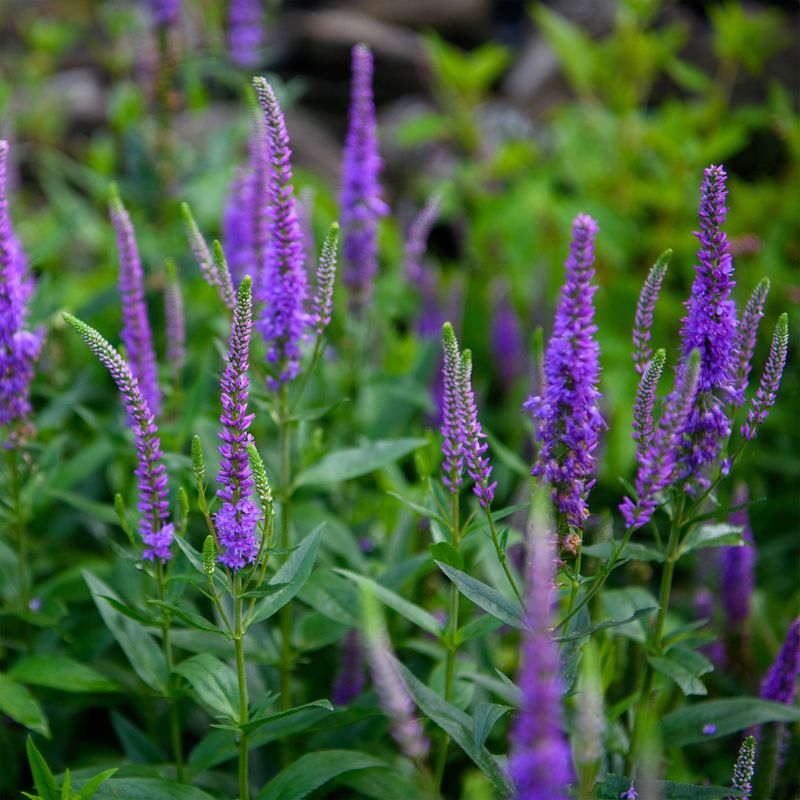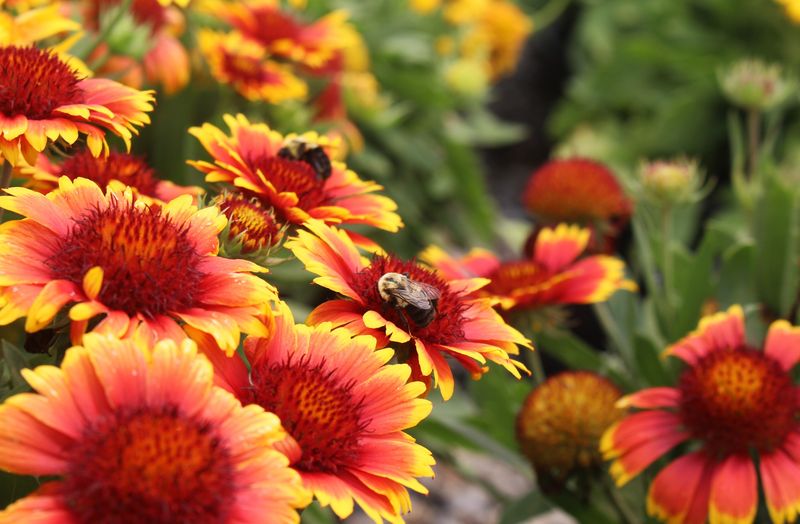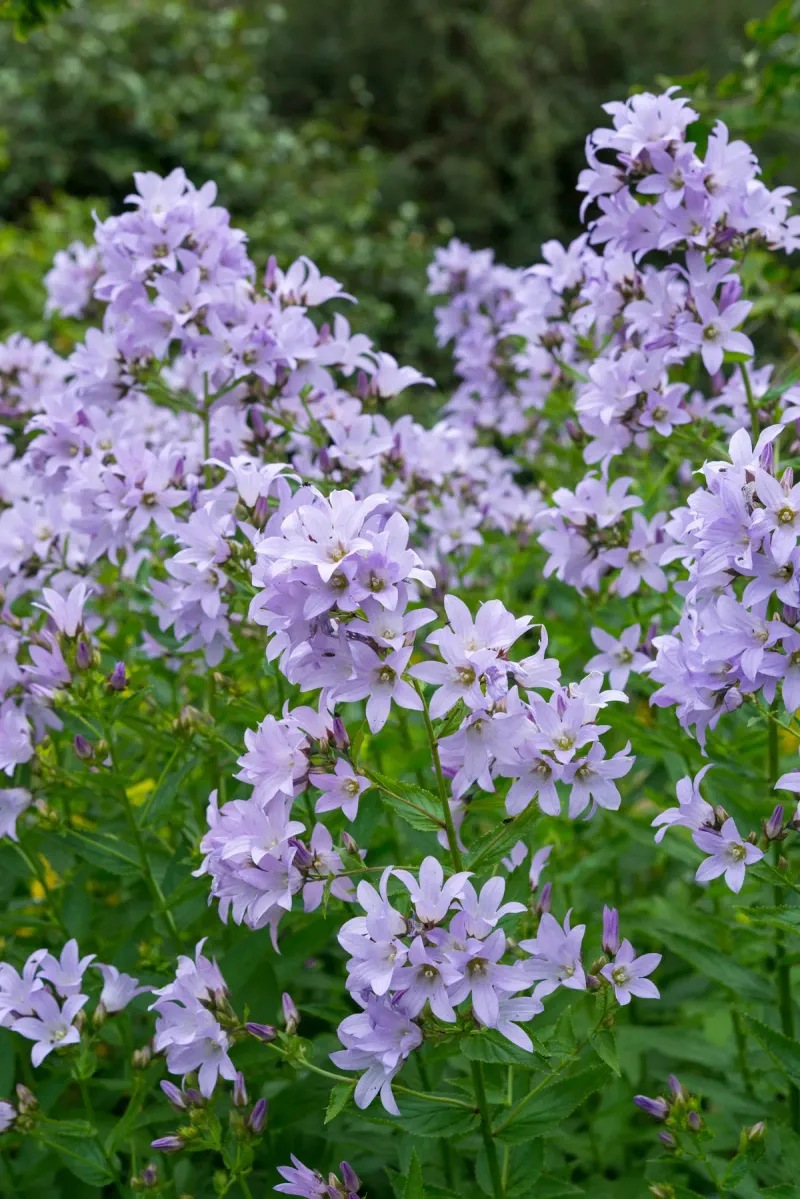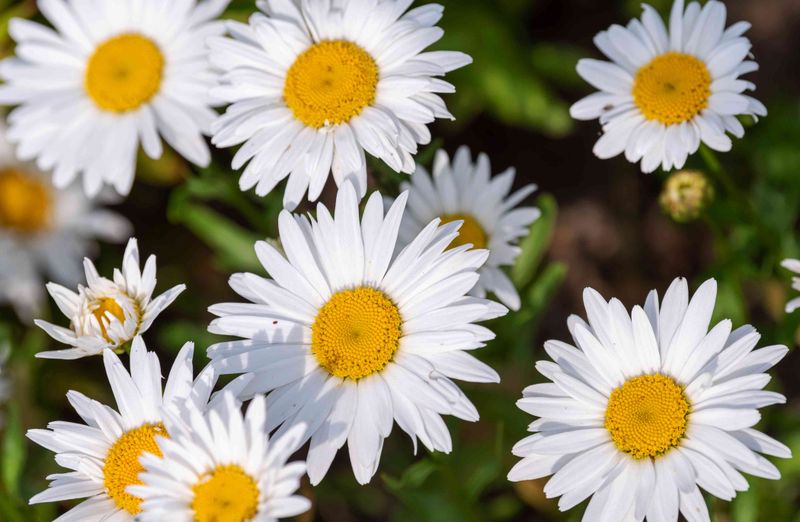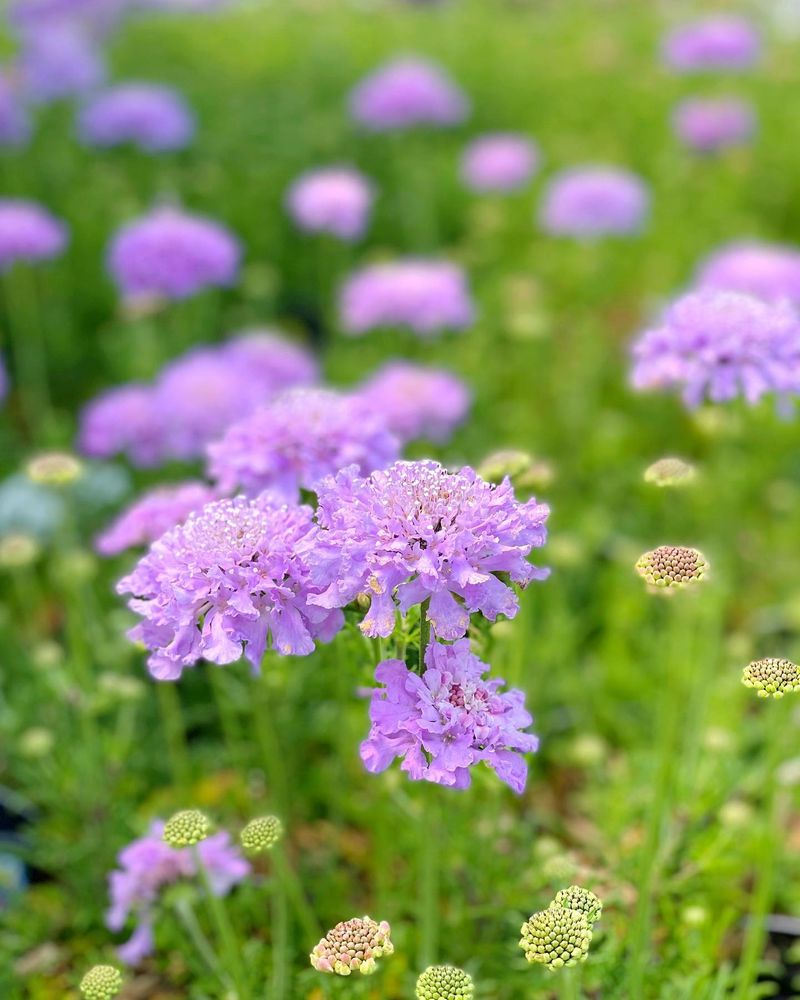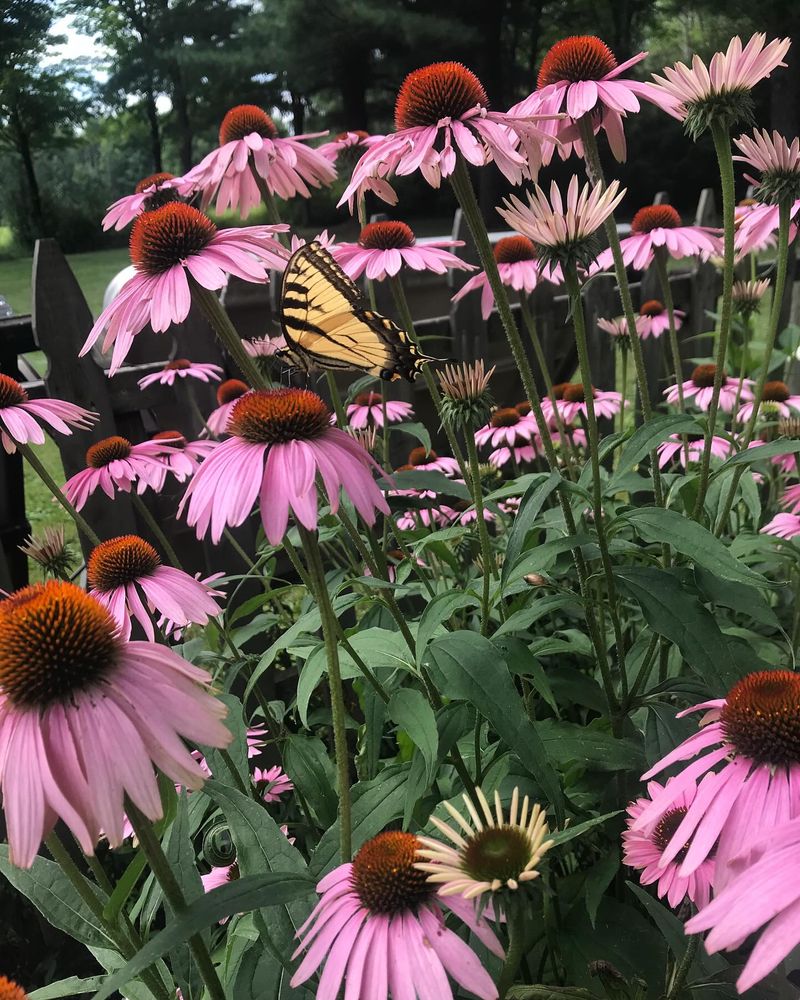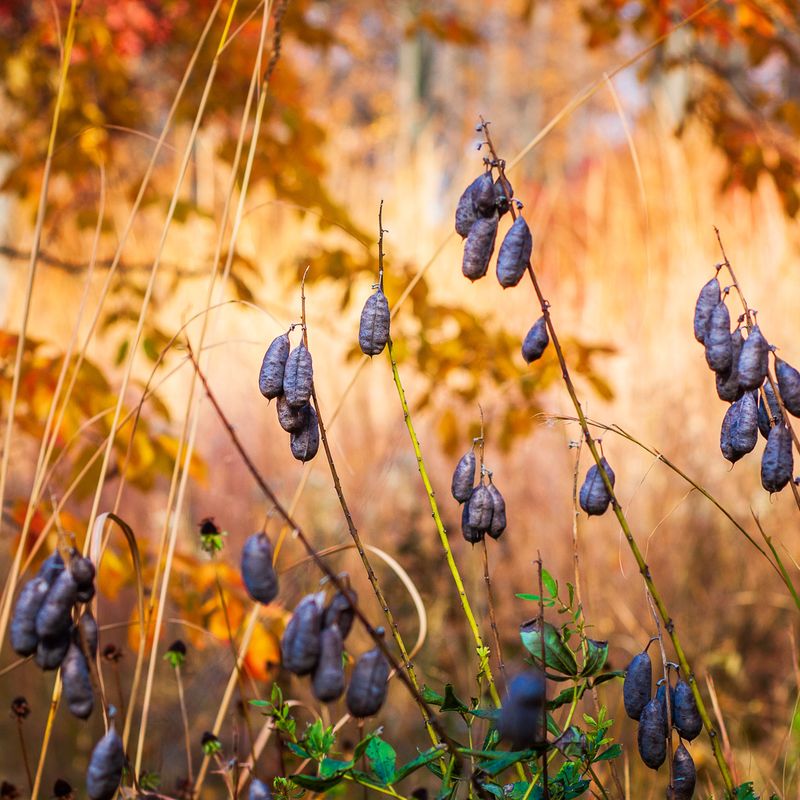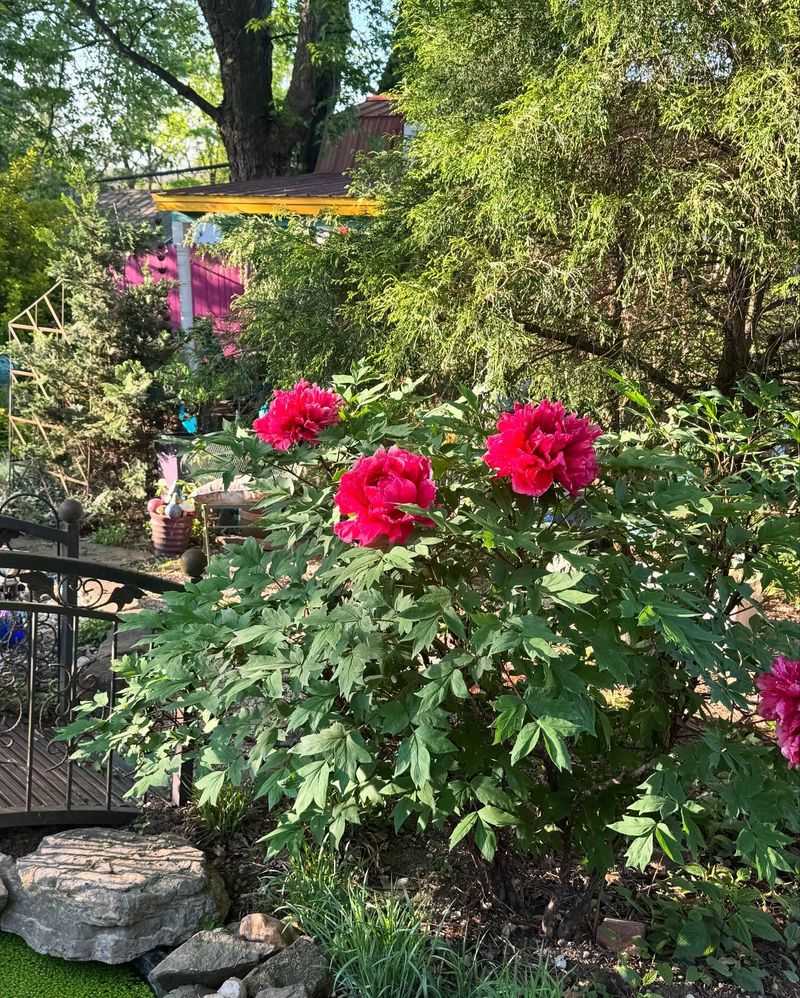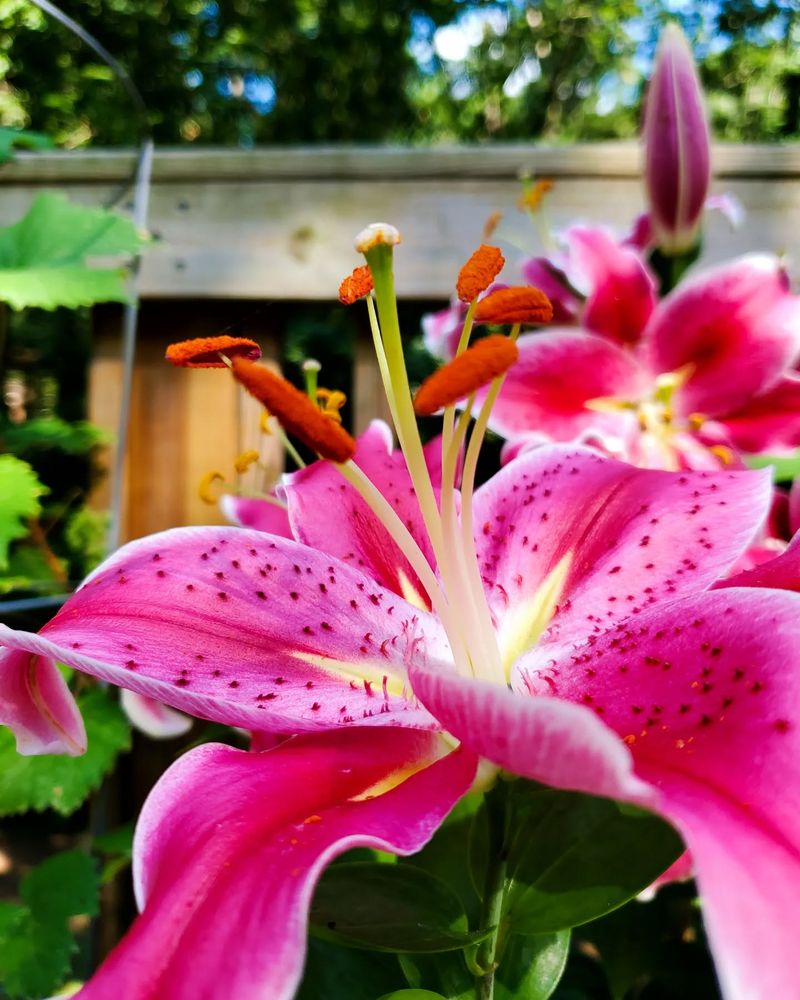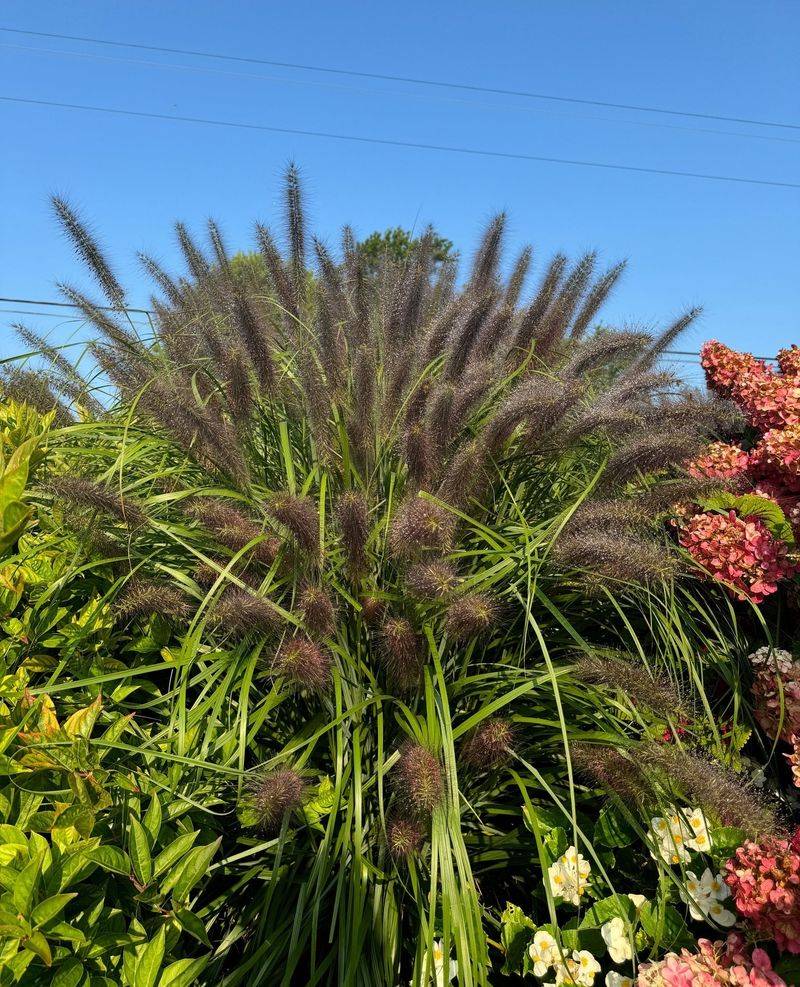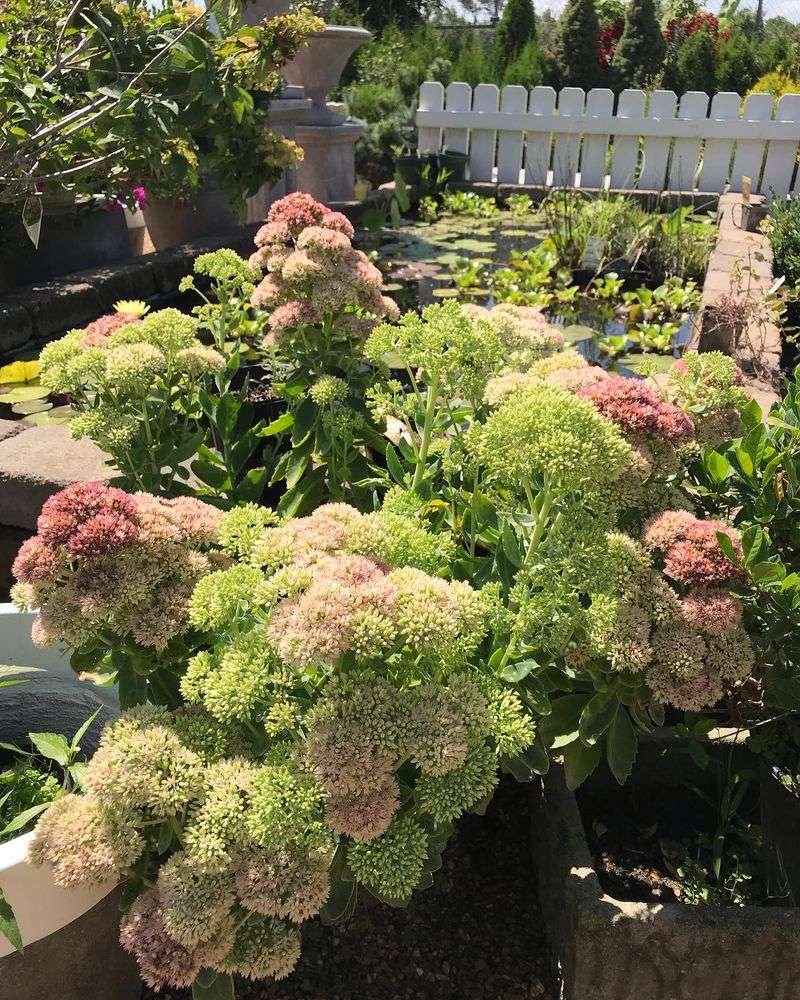Summer gardening isn’t just about watering and weeding – it’s prime time for strategic pruning too! Many perennials benefit from a mid-season haircut that encourages fresh growth and a second flush of beautiful blooms.
But beware: some flowers actually perform worse when cut back, making it crucial to know which plants to snip and which to skip.
1. Shear Back Coreopsis for a Spectacular Second Show
Coreopsis plants become tired-looking after their first flowering flush. Grab your garden shears and cut them back by about one-third when blooms start fading in mid-summer.
The plants will respond with fresh foliage and a brand new set of cheerful yellow or red blooms that can last until frost. This simple pruning trick transforms what could be a one-hit wonder into a season-long performer in your garden beds.
2. Deadhead Salvias Regularly for Non-Stop Color
Salvias are garden workhorses that really earn their keep with proper maintenance. Once the colorful flower spikes start to fade, cut the stems back to just above a set of leaves or side shoots.
This quick trim prevents the plant from wasting energy on seed production. Within weeks, you’ll be rewarded with fresh spikes of purple, blue, or red blooms. Salvias respond remarkably well to this treatment, often flowering continuously from June through September.
3. Rejuvenate Catmint with a Bold Midsummer Chop
Nepeta (catmint) tends to sprawl and look untidy after its initial flowering period. Don’t be shy – cut the entire plant back by half when the first flush of blooms fades.
This drastic-looking haircut stimulates compact, fresh growth and prevents the center from becoming woody and open. Within three weeks, your catmint will form a neat mound of aromatic foliage topped with a fresh wave of lavender-blue flowers that pollinators adore.
4. Give Bleeding Hearts a Fresh Start After Spring
Bleeding hearts (Dicentra) naturally die back as summer heat intensifies. When the foliage begins yellowing, it’s the perfect time to cut the entire plant to ground level.
This tidy trim prevents the garden from looking messy with declining foliage. In cooler climates, this bold cut can trigger fresh growth and sometimes even a modest second bloom. The plant stores energy in its roots, so this summer haircut won’t harm next year’s spectacular spring show.
5. Refresh Geraniums for Late-Season Vibrancy
Hardy geraniums (cranesbills) often become leggy and sparse-flowering by midsummer. Cut back the entire plant to about 2-3 inches from the ground when blooming slows in July.
This seemingly harsh treatment works wonders! Fresh foliage will emerge quickly, followed by a new round of blooms. Some varieties like ‘Rozanne’ respond especially well, flowering continuously until frost if given this rejuvenation cut. The compact regrowth also looks tidier in garden borders.
6. Trim Yarrow for Extended Blooming and Sturdier Stems
Yarrow’s tall flower stems tend to flop over after their initial bloom, creating an untidy appearance. Cut spent flower stems back to basal foliage once the first flowers fade.
This encourages side shoots to develop, producing a second flush of smaller but more numerous blooms. The new growth tends to be sturdier and more compact, preventing the sprawling habit that makes yarrow look messy. Regular deadheading throughout summer extends the flowering season significantly.
7. Shear Lavender After First Bloom for Compact Growth
Lavender benefits tremendously from a post-bloom trim in early to mid-summer. Cut stems back by about one-third, making sure to leave some green growth and not cutting into woody stems.
This pruning prevents the plant from becoming leggy and encourages a tighter growth habit. While you might not get a full second bloom, the plants will look neater and develop stronger stems. The trimmed foliage releases that signature lavender scent, making pruning day a sensory delight.
8. Cut Back Delphiniums for a Surprise Autumn Display
Delphiniums put on a spectacular early summer show but often look ragged afterward. Once the magnificent flower spikes fade, cut the entire plant back to about 3 inches from the ground.
This bold pruning stimulates basal growth and often results in a second, smaller bloom in late summer or early fall. The second showing won’t match the first in height or drama, but these bonus blooms extend the season of these cottage garden favorites and refresh their appearance.
9. Refresh Dianthus for Continuous Sweet Fragrance
Dianthus (pinks) can look tired and sparse after their initial flowering period. Use scissors to cut back the entire plant by about half once the first flush of blooms fades.
This neat trim removes spent flowers and stimulates fresh growth from the center of the plant. Many varieties will reward you with a second wave of spicy-scented blooms. The pruning also prevents the center from becoming woody and open, extending the plant’s productive lifespan.
10. Give Veronica a Midsummer Reset for More Spikes
Veronica (speedwell) produces lovely spikes of blue, pink, or white flowers that eventually fade from the bottom up. Cut flower stems back to basal foliage once more than half the spike has finished blooming.
This prompt pruning often triggers side shoots to develop, producing additional flower spikes. Some varieties will produce a full second flush if cut back hard enough. The fresh growth creates a tidier plant with better air circulation, reducing potential disease issues in humid summer conditions.
11. Deadhead Gaillardia for Months of Cheerful Daisies
Gaillardia (blanket flower) responds dramatically to regular deadheading throughout summer. Remove spent flowers by cutting stems back to the nearest set of leaves or to basal foliage if stems are leggy.
Without this maintenance, the plant focuses on seed production and blooming slows significantly. With consistent deadheading, these colorful daisies will flower continuously from early summer until frost. The plant stays more compact too, preventing the sprawling habit that can make gardens look untidy.
12. Revitalize Campanula with a Post-Bloom Haircut
Campanula (bellflower) often looks exhausted after its initial flowering period. Cut back flowering stems to basal foliage once blooms fade, removing about one-third of the plant’s height.
This rejuvenation pruning stimulates fresh growth from the base and often produces a second, more modest flowering in late summer. The trimmed plants look neater in the garden too. Some sprawling varieties like C. poscharskyana benefit from even harder cutting back to control their enthusiastic growth.
13. Sharpen Shears for Shasta Daisies’ Second Act
Shasta daisies produce masses of classic white flowers that eventually fade and look brown. Cut flower stems back to basal foliage after the first heavy flush of blooming finishes.
This decisive pruning often results in a second wave of smaller but equally charming flowers in late summer. Without this maintenance, the plants look increasingly ragged as summer progresses. The trimming also prevents excessive self-seeding that could make these plants too aggressive in the garden.
14. Snip Back Scabiosa for Continuous Pincushion Blooms
Scabiosa (pincushion flower) is a pollinator magnet that benefits tremendously from regular deadheading. Cut spent flowers back to the first set of leaves on the stem as soon as they begin to fade.
This prompt attention prevents seed formation and directs the plant’s energy into producing more blooms. With consistent deadheading, scabiosa will flower continuously from early summer through fall. The plant maintains a tidier appearance too, without the distraction of browning seed heads.
15. Trim Echinacea for Extended Pollinator Support
Echinacea (coneflower) produces distinctive blooms that pollinators adore. Remove spent flowers by cutting stems back to a point where you see new buds forming on side branches.
This selective pruning encourages the plant to develop these secondary buds into full flowers. While some gardeners leave seedheads for birds and winter interest, deadheading during summer extends the blooming season significantly. The trimmed plants also maintain a more upright habit rather than flopping under the weight of seed heads.
16. LEAVE ALONE: Baptisia’s Architectural Seed Pods Add Interest
Baptisia (false indigo) produces beautiful spires of blue, yellow, or white flowers in late spring. After blooming, distinctive inflated seed pods develop that add architectural interest to the garden.
Cutting back after flowering actually reduces the plant’s ornamental value. The robust stems and attractive seed pods provide structure through summer and fall. Additionally, baptisia resents disturbance and hard pruning can weaken the plant, reducing next year’s flowering performance.
17. LEAVE ALONE: Peonies Need Their Foliage for Next Year’s Blooms
Peonies flower gloriously in late spring, but their contribution doesn’t end there. The glossy foliage continues photosynthesizing throughout summer, storing energy in the roots for next year’s floral display.
Cutting back peony foliage in summer seriously weakens the plant. While deadheading spent flowers is beneficial, the leaves should remain untouched until they yellow naturally in fall. Premature cutting reduces bloom quantity and quality in subsequent years, potentially taking several seasons for the plant to recover.
18. LEAVE ALONE: Oriental Lilies Store Energy Through Their Stems
Oriental lilies produce spectacular fragrant blooms on tall stems in mid to late summer. After flowering, these stems continue to feed the bulbs below ground, strengthening them for next year’s performance.
While it’s tempting to cut back the somewhat unattractive yellowing foliage, resist the urge! Premature cutting prevents the plant from properly storing energy. You can remove individual spent flowers for neatness, but leave the stems and foliage intact until they yellow completely in fall.
19. LEAVE ALONE: Ornamental Grasses Need Full Season Growth
Ornamental grasses like Miscanthus and Pennisetum develop their distinctive plumes in late summer and fall. Cutting these back in summer removes their primary ornamental feature before it even develops!
These grasses need the full growing season to reach their magnificent mature form. The graceful seed heads and plumes provide movement, sound, and winter interest in the garden. Summer pruning also weakens the plants by interrupting their natural growth cycle, potentially reducing vigor the following year.
20. LEAVE ALONE: Autumn Sedums Develop Better with Intact Stems
Sedums like ‘Autumn Joy’ form flower buds in mid-summer that gradually open into broad, flat flower heads by fall. Cutting these back interrupts their most attractive developmental phase.
The changing flower colors – from pale green buds to pink and eventually rusty red – create months of evolving interest. Summer pruning produces weak, floppy regrowth that rarely flowers properly. Let these architectural plants follow their natural cycle for the best garden performance and strongest stems.

